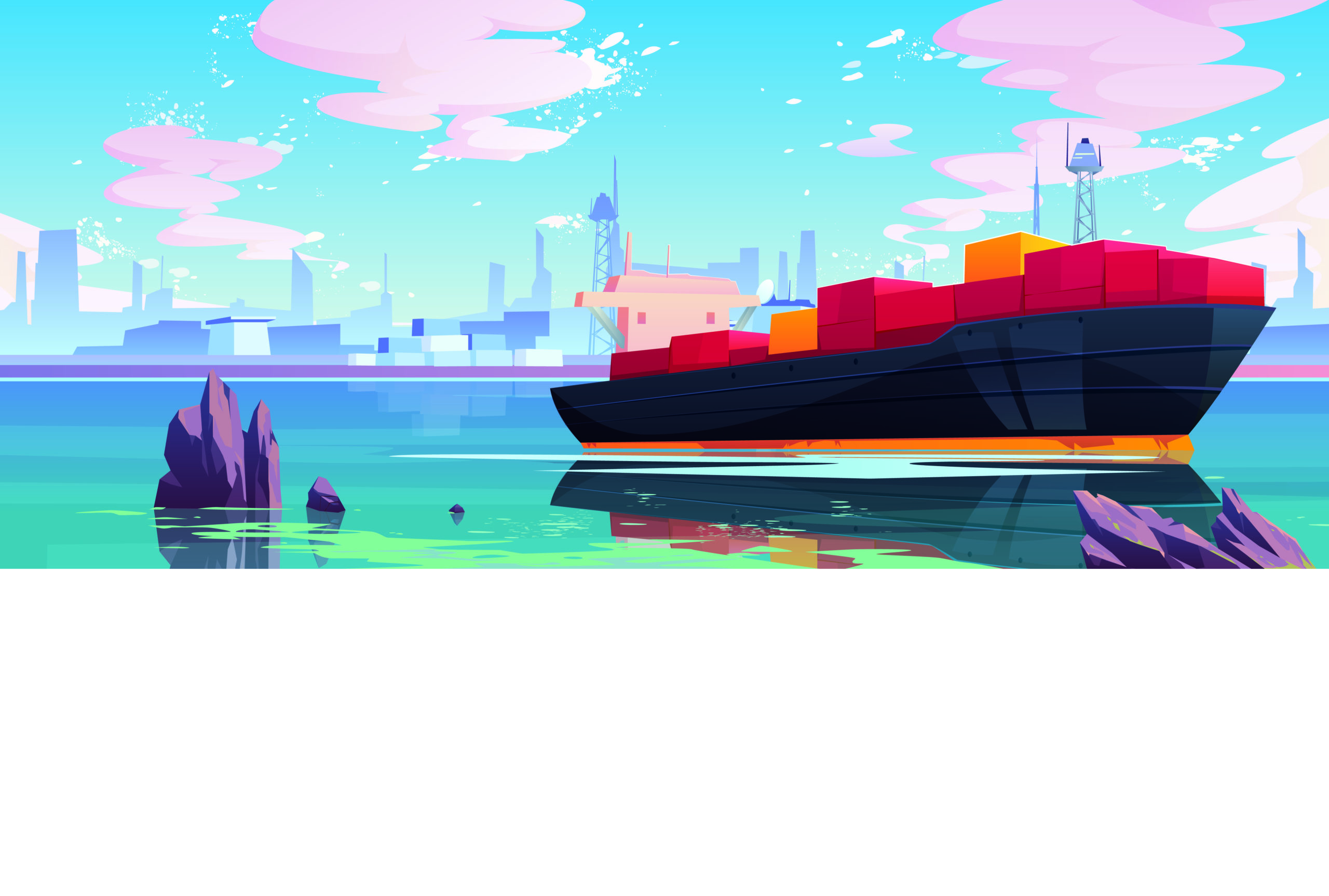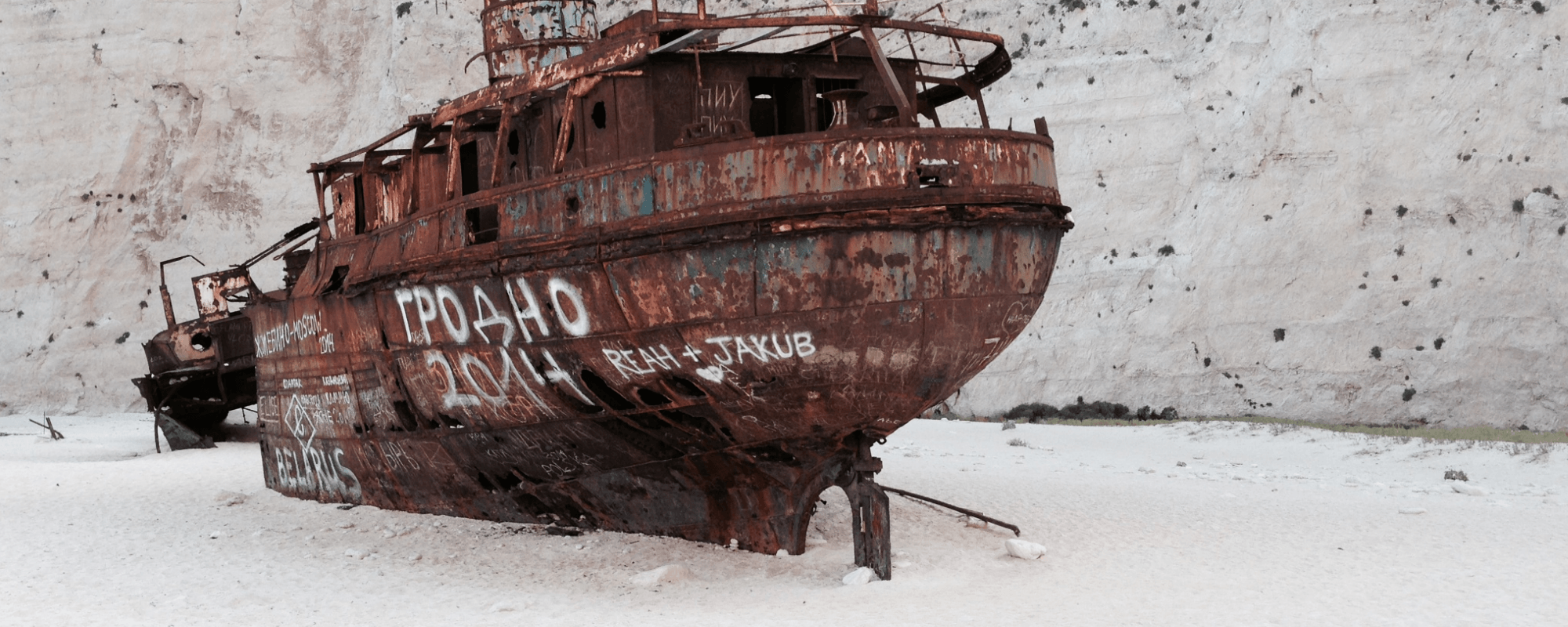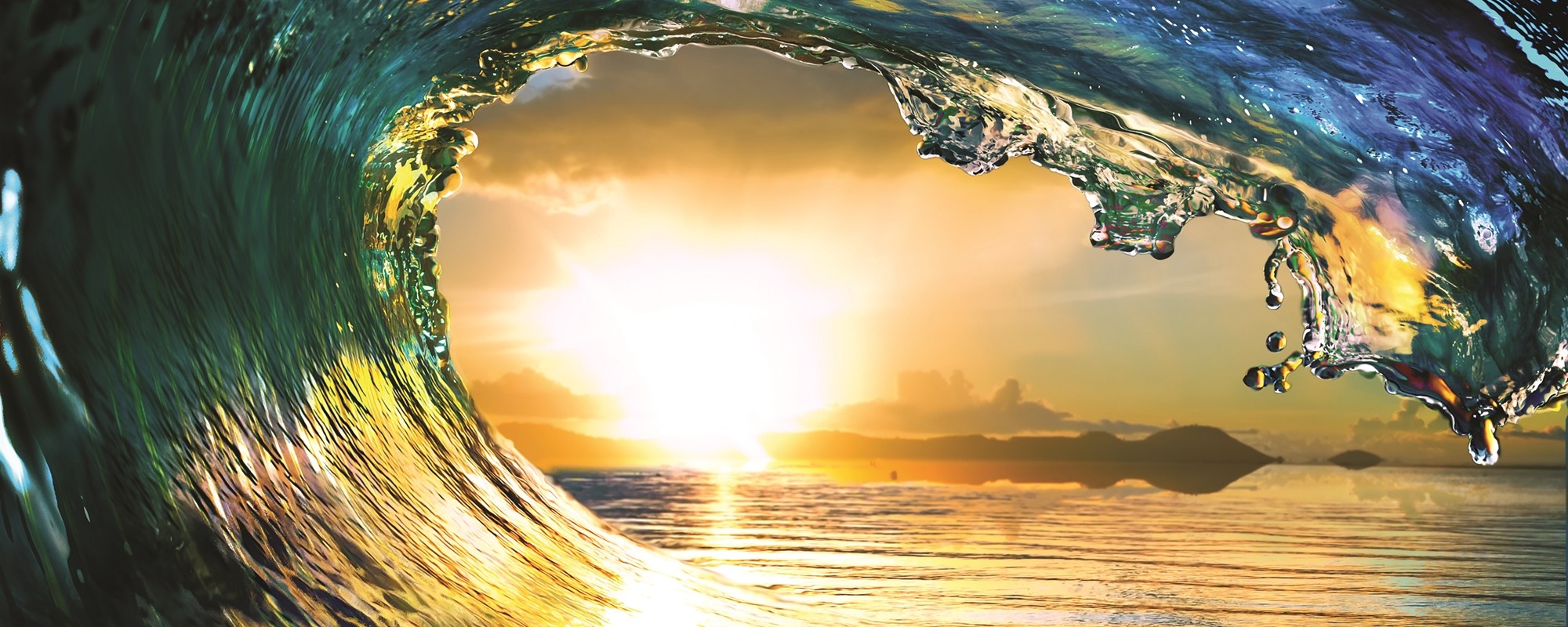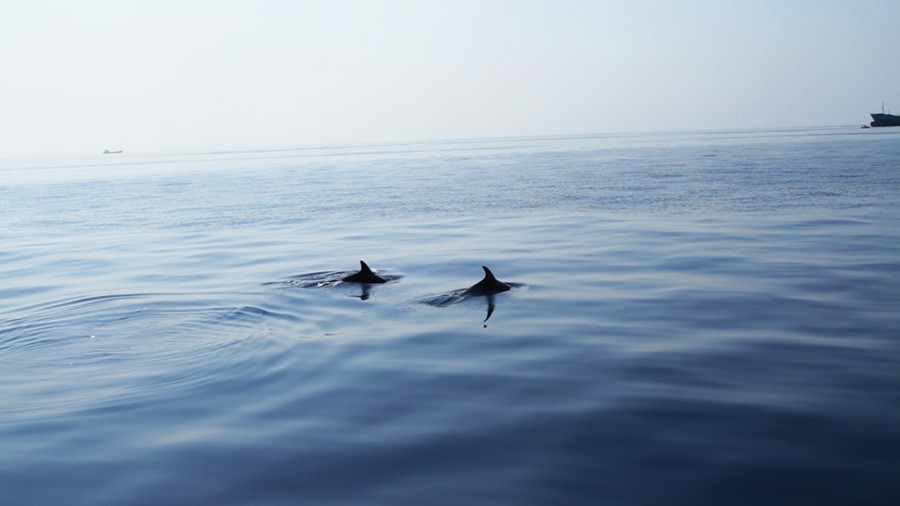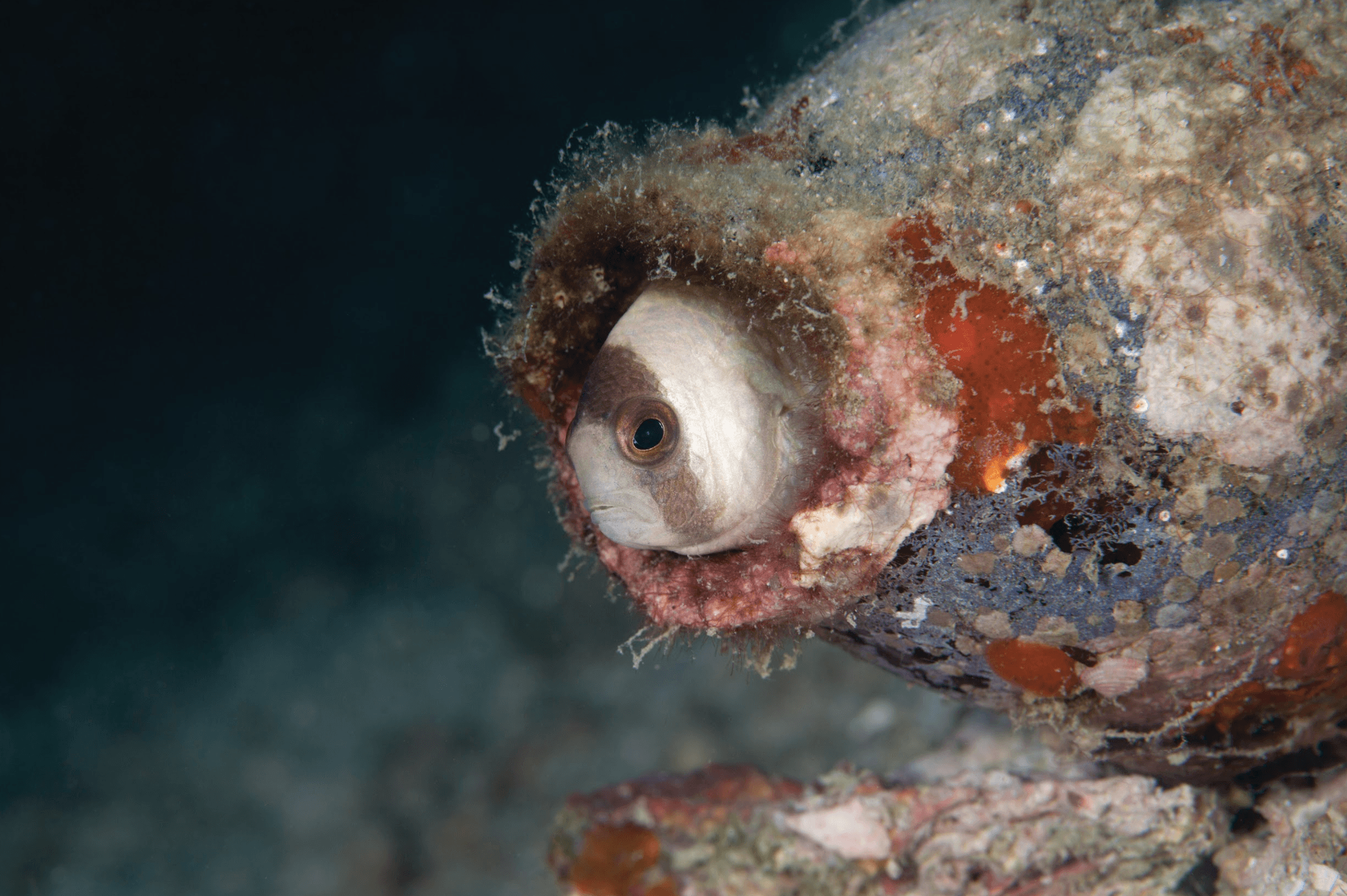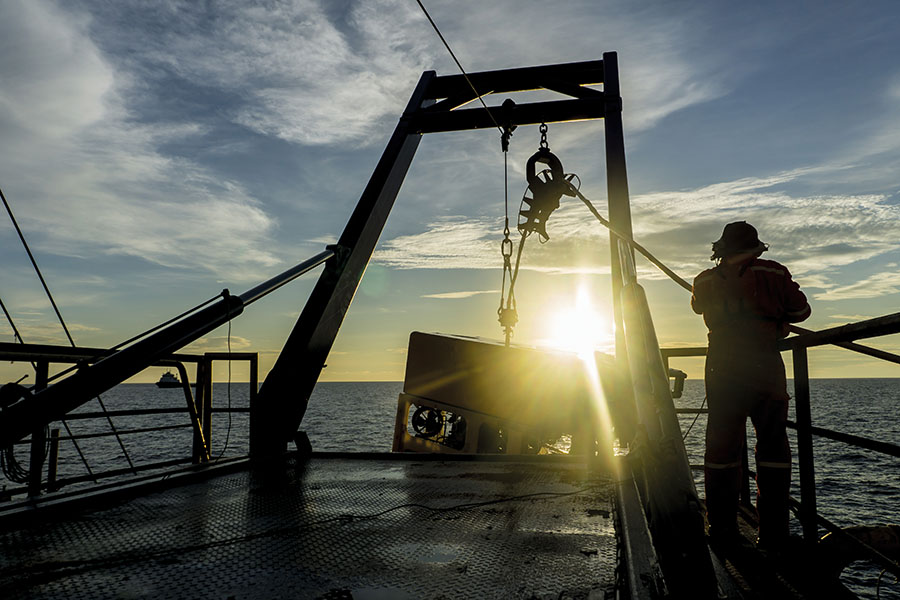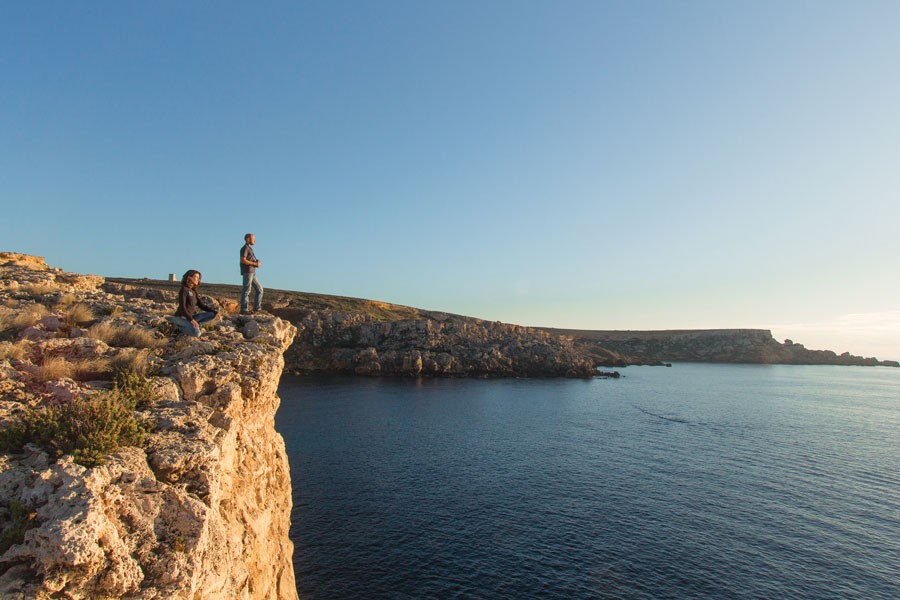The maritime industry is one of the largest producers of greenhouse gas emissions. While newly introduced legislation helps control this hazard, it has significantly increased the burden for Port State and environmental authorities. Antónia Ribeiro interviews Nicky Borg, the founder of local start-up Marine Hound, to discover how their original smart buoys can help solve the problem.
Continue readingSMARTAQUA: Acting fast on marine corrosion
Maintenance is not the sexiest aspect of business, but diligent corrosion monitoring in the oil, gas, and maritime industry could prevent massive environmental accidents. Inês Pimparel writes on behalf of AquaBioTech Group.

The maritime industry is going through massive developments. Traditional oil and gas remain powerful, as does the shipping industry, but there is a big rise in more sustainable businesses such as offshore wind and solar energy farms. Corrosion affects them all equally.
The NACE International Institute estimates that corrosion costs the maritime industry between $50 and $80 billion every year. Clearly, maintenance is an expensive practice, which might lead to neglect, resulting in catastrophic environmental incidents.
A low-cost, eco-friendly, and efficient solution is needed to monitor corrosion and enable earlier repair.
The industry currently monitors structures using ultrasonic or magnetic sensors. However, other solutions exist. The University of Aveiro (Portugal), the Norwegian research institute SINTEF, and the Maltese company AquaBioTech Group are working on SMARTAQUA, an innovative but simple approach that uses a special paint.

It uses environmentally-friendly nanomaterials to form a functional solid film over surfaces such as the support for a floating fish farm or the base of a wind turbine. Because the nanolayer goes directly onto the structure, it can combine colorimetric with magnetic analysis to detect corrosion as it happens.
The detection method will be tailor-made to the depth at which the metallic structure is placed to assess the integrity of the structures. Colorimetric detection is a relatively simple, user friendly, and reliable manner of detecting corrosion in splash zones. But in submerged structures, where colorimetric detection is not possible, the use of magnetic measurements would reveal the state of coated substrates.
The approach is not completely novel. The aeronautical sector is already introducing it. The AquaBioTech Group is performing toxicity tests on the nanomaterials using marine organisms such as microalgae and mussels. After this, the team will test the nanolayer’s efficacy on metallic structures in their offshore testing site close to St Paul’s Islands.
If this technology is proven safe and effective it will revolutionise the field of monitoring activities. It will reduce transport needs when assembling new offshore structures, indirectly reducing fuel use and greenhouse gas emissions. The commercial and environmental benefits are massive.
The project is highly collaborative. It brings together a small business, a research institute, and a university; testament that success can be achieved through co-creation, inclusivity, and sustainability—and that small advances can lead to a sea of change.
Note: This project was funded by the Research Council of Norway (through the programme of Petromaks II, project 284002), the Foundation of Science and Technology in Portugal, and the Malta Council for Science and Technology via the MarTERA – ERA-NET Co-fund scheme of H2020 of the European Commission.
Taking solar to sea
In a world first, a small team of engineers at the University of Malta is attempting to prove that harnessing solar power in the open sea is theoretically possible and cost-effective. Laura Bonnici speaks to Prof. Luciano Mulѐ Stagno to learn more about the ground-breaking Solaqua 2.1 project.
Renewable energy is in the spotlight. In Malta—an island that is said to enjoy an average of 300 days of sunshine per year—solar power has become mainstream, enabling the country to reach its goal of using 10% renewable energy by 2020.
But any advantage Malta has in terms of abundant sunshine, it loses through its lack of another vital resource: space. Measuring just 316 km², Malta’s limited surface area means that, beyond the existing photovoltaic (PV) panels installed on rooftops or disused quarries, any land left for larger PV installations is rare and expensive.

Prof. Luciano Mulѐ Stagno at the University of Malta believes the answer to this problem lies not on land, but at sea. Malta being surrounded by water, he has proposed that installing solar panels in open water, in offshore floating PV farms, could be as cost-effective and reliable as those on land—an idea that has never progressed beyond the theoretical stage anywhere in the world.
‘There are many PV projects happening on fresh water everywhere, from China and the UK to France and USA. But none of them are working on open sea,’ explains Mulѐ Stagno. ‘Their PV farms are installed in more sheltered, land-locked waters such as irrigation ponds or lakes, believing that PV farms cannot survive sea conditions. The Solaqua project aims to prove that they can survive, and do so at a comparable cost to land-based PV farms.’
When funding was secured from MCST in 2012, the previous Solaqua 1.0 project set about achieving these ambitious aims. Testing various prototypes out at sea, it confirmed that large, floating platforms were viable, cheap to construct, and could produce more power than similar systems on land.
The sea proved beneficial for many reasons. ‘The offshore panels produced around 3% more energy than similar land-based modules simply by being at sea, possibly due to the cooler temperatures at sea and a less dusty environment.’
The success of the first project inspired a second. With this one, the modular raft was designed and tested. ‘Solaqua 2.0 was financed by Takeoff [The University of Malta’s business incubator] in July 2017, with a preliminary design for the platform almost completed. Now discussions are underway about possible patents for the design,’ Mulѐ Stagno elaborates. ‘The ultimate aim is to launch a large farm in Maltese territorial water which, if it meets

the cost and power output targets, will be followed by other systems worldwide.’
The Professor and his team (marine structural engineer Dr Federica Strati, systems engineer Ing. Ryan Bugeja, and engineer Martin Grech) are now starting the next phase of the Solaqua project. Before the team builds and launches a full-scale system, they have to conduct a series of rigorous wave tank tests. Using a scale model while mimicking the worst possible sea conditions that the system may encounter, the team will be able to refine the design and optimise power output by testing the effect of water motion, cooling, or even different types of panels.
‘Through Solaqua 2.1, we hope to reassure investors that the system is viable. Once completed, we will be ready to launch a full-scale system that could be used not only by islands such as Malta, but also in coastal cities around the world which have insufficient land available for PV systems.’
Investors are being invited to join this project to push for global commercialisation. To reach this stage, several local entities supported the project. The Regulator for Energy and Water Services, with the help of the RIDT (the University of Malta’s Research Trust), invested €100,000 to cover the cost of constructing the scale model, as well as testing, equipment, transport, and engineers. And now that the project is commanding international interest, potential investors are being sought for the half a million euros needed to achieve a full-scale floating solar farm in Maltese waters.
‘This is a homegrown project, in which Malta could be an example to the world,’ explains Mulѐ Stagno. ‘We have already placed Malta at the cutting edge of this research area by being the first to test small systems in the open sea. Now we need to find an investor willing to take the plunge and help us create the world’s first full-scale floating solar farm. With Solaqua, Malta could be at the forefront of a ground-breaking new global industry—one which has the potential to change the way solar power is collected and used the world over.’
Chasing the white whale: the pursuit of sustainable tourism in Malta
EcoMarine Malta’s boat tours are leading the way in environmentally sustainable tourism around the Maltese Islands. Founder Patrizia Patti talks to Edward Thomas about how economic success doesn’t need to be sacrificed in order to protect nature.
Aquarter of Malta’s GDP comes from the tourism industry. It accounts for €2 billion annually and shows no sign of slowing down. Tourist expenditure went up by 13.9% from 2016 to 2017 alone. It constitutes one in every seven jobs in the local economy and maintains a close link to development: better hotels, improved roads, more diverse shops and restaurants. Beyond the economic benefits, tourism promotes and celebrates local customs, food, traditions, and festivals, creating a sense of civic pride.
However, there are concerns. In July and August, Malta, Gozo, and Comino are covered by thousands of holiday-makers flocking in. This is a not only a burden on already strained island resources and infrastructure including water, waste management, and traffic congestion, but it pushes many coastal habitats and aquatic ecosystems to the breaking point, with drastic impacts on local biodiversity.
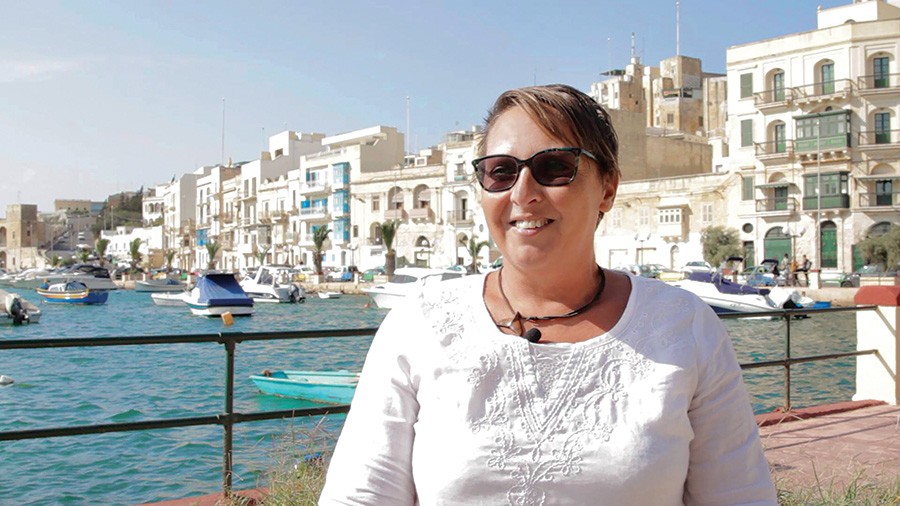
Marine biologist Patrizia Patti laments how ‘people go with speed boats to Comino carrying beers, drinking, throwing bottles into the sea, playing loud music… it disturbs everything.’ If larger tour companies made a small effort to be more responsible, it could have a large effect, she says. ‘Even a simple announcement on a microphone, reminding people they are in a protected area and to behave in a certain way, advising people to respect nature, would help. It’s only a small reminder but it would help a lot.’ Always looking to lead by example, and to show that small actions can have a great impact, Patti set up EcoMarine Malta. The start up organises responsible boat tours around the island, where the international code of conduct is followed and people can experience the joy of encountering dolphins, turtles, and seabirds in their natural habitat.
FACE TO FACE
Patti says their goal is to establish profound personal connections between people and the sea in the hopes that it will change behaviour. She has been passionate about marine biology since the age of 17, when she first encountered a dolphin. That happened during a school trip to an aquarium. She says ‘it was exciting because it was the first time I saw a dolphin, but it was terrible seeing it trapped in a small tank. It made me so sad.’ The emotional response was strong enough to move Patti to tears. ‘It was at that point I decided I wanted to become a marine biologist. I wanted to help.’
Patti went on to study the ecology of sperm whales in the Ligurian Sea before travelling far and wide, gaining experience working with marine mammals in Canada, the Maldives, and the Red Sea. In 2013, she cofounded Costa Balenae Whale and Nature Watching in Italy, a company, like Eco Marine Malta, which strongly focuses on bringing humans closer to marine wildlife, forming lasting memories that inspire them to consider their environmental impact and educating both children and adults about the natural biodiversity of the Mediterranean Sea.
How can you love something and want to protect it when you’ve never seen it?
Seeing these animals and experiencing their natural environment first hand is vital to establishing an emotional bond. This is what then engages people and inspires them to change their behaviour. ‘How can you love something and want to protect it when you’ve never seen it?’ Patti questions. By opening local and tourists’ eyes to the majesty of indigenous species, EcoMarine Malta create compassion and motivate people to take responsibility for the environment too. They also chip away at the sense of helplessness many feel when it comes to ‘actually making a difference.’ EcoMarine Malta provide education and information for their passengers to follow. Patti, who leads the tours herself, goes into how they can enjoy Malta’s beaches responsibly and sustainably, empowering them to take ownership for their actions and decisions before it’s too late.
MONEY PROBLEMS
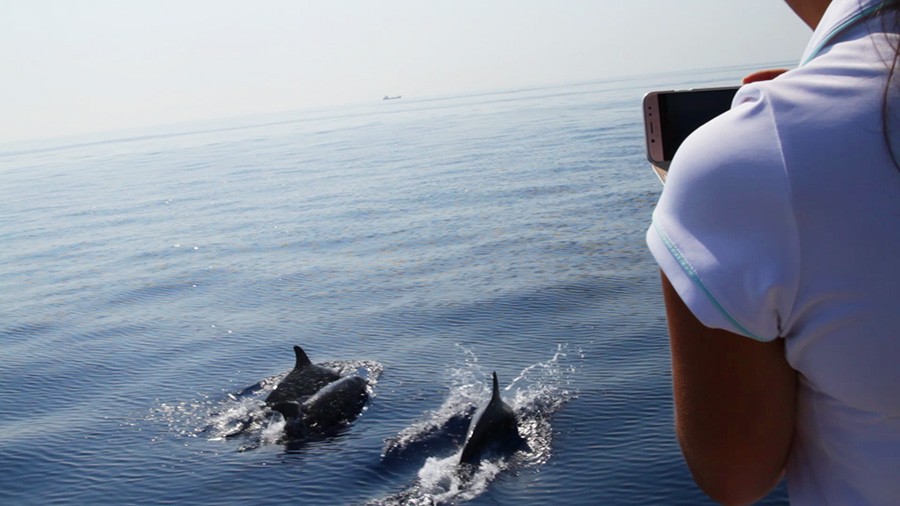
It’s not always been plain sailing for EcoMarine Malta and their boat trips. Patti firmly believes that environmental conservation can be a tool to increase economic growth and employment in Malta. ‘Even if we act like an NGO, we decided to be a private company
because we want to create job places and grow and be able to provide the best service possible,’ Patti says. But not everyone agrees. Patti has received plenty of push back from others in the field as she lobbies for best practices to be enforced around the islands.
Some views are severely narrow and short-sighted, rooted in the belief that any sort of restriction of operations is bad, even if inspired by respect and protection for the natural resources they use. ‘People have to understand that a protected area is to enjoy for a long time. Maybe not now, maybe for one or two years you have to be careful, you can’t do everything you want to do. But after those two years, you can enjoy a new beautiful area, rich in life,’ explains Patti. Setting up EcoMarine Malta as a for-profit enterprise to prove these people wrong, however, has led to another kettle of fish. Because they’re not an NGO, applying for sponsorship and funding is a major challenge. Potential benefactors often dismiss collaboration, telling Patti that the company should be able to support its own endeavours.
This lack of support saw EcoMarine Malta having to rent boats from various charter companies, a massive expense. Externally renting a boat brought with it uncertainty and inflexibility. Last-minute dropouts or weather changes forced them to cancel tours and lose a lot of money. ‘The boat rental still had to paid for,’ she says. But things are looking up. EcoMarine Malta purchased their own boat this summer, and Patti is working hard on getting all the permits in place to have it out on the water as soon as possible. ‘Now we will be able to plan our own routes and diversify the tours we offer. At the moment, we have six tours available to choose from, including a sunset tour when marine life is at its most active,’ she smiles.
GET THEM YOUNG
2018 might be EcoMarine Malta’s first full summer season, but that doesn’t stop Patti from dreaming big about their future. She and her team want to do more outreach and education and are working on offering a series of courses for students aged between 10 and 16 years old. These children will be able to participate in a day of hands-on classroom activities, discovering and learning about sustainability and the ecosystem of the Mediterranean, followed by a boat trip to implement their new knowledge, observing and identifying the variety of wildlife and nature surrounding them and their island. ‘We hope to inspire a whole new generation of marine biologists and environmental scientists,’ Patti says.
With an army of environmentalists in the making, Patti hopes they will take over her role in the future. That would allow her to refocus on a passion she is itching to pick up again: searching for evidence of sperm whales in the Mediterranean surrounding the Maltese Islands. Her eyes light up as she admits to me, ‘I love outreach, but my personal dream is to spot sperm whales in Malta.’ Researchers know that juvenile and female sperm whales in the Atlantic remain in warm waters while the males migrate to the poles to feed, but movements and social dynamics of pods in the Mediterranean are still unclear.
With an army of environmentalists in the making, Patti hopes they will take over her role in the future.
Looking forward, Patti is working hard to establish networks with other entities and NGOs who share the same vision. EcoMarine Malta already collaborates with the likes of Birdlife Malta and has been involved with beach ‘Clean Up’ projects in the past year. Patti asserts that despite everything, ‘the Maltese public and tourists are some of the most enthusiastic and passionate people we’ve worked with so far. It’s great to see people of all ages and backgrounds, coming together to work on a common goal.’
‘Everyone can contribute different things, and together, it adds up to make a big difference.’ Patti is keen to encourage people to help in whatever way they can. To cooperate with others and not feel overwhelmed or alone in their efforts. ‘It’s not possible to do it alone. We need to work together, holistically, caring about the land, sea, and air, to protect the island’s environment.
For more information visit: ecomarinemalta.com.mt
Further reading:
Briguglio, L. (2008). Turismo sostenible en jurisdicciones de islas pequeñas con especial referencia a Malta. ARA: Revista de Investigación En Turismo, 1(1), 29–39. Retrieved from http://revistes.ub.edu/index. php/ara/article/view/18966
Croes, R., Ridderstaat, J., & van Niekerk, M. (2018). Connecting quality of life, tourism specialization, and economic growth in small island destinations: The case of Malta. Tourism Management, 65, 212–223. http://doi.org/10.1016/j. tourman.2017.10.010
Markwick, M. (2018). Valletta ECoC 2018 and cultural tourism development. Journal of Tourism and Cultural Change, 16(3), 286–308. http://doi.org/10.108 0/14766825.2017.1293674
Author: Edward Thomas
Spotting marine litter
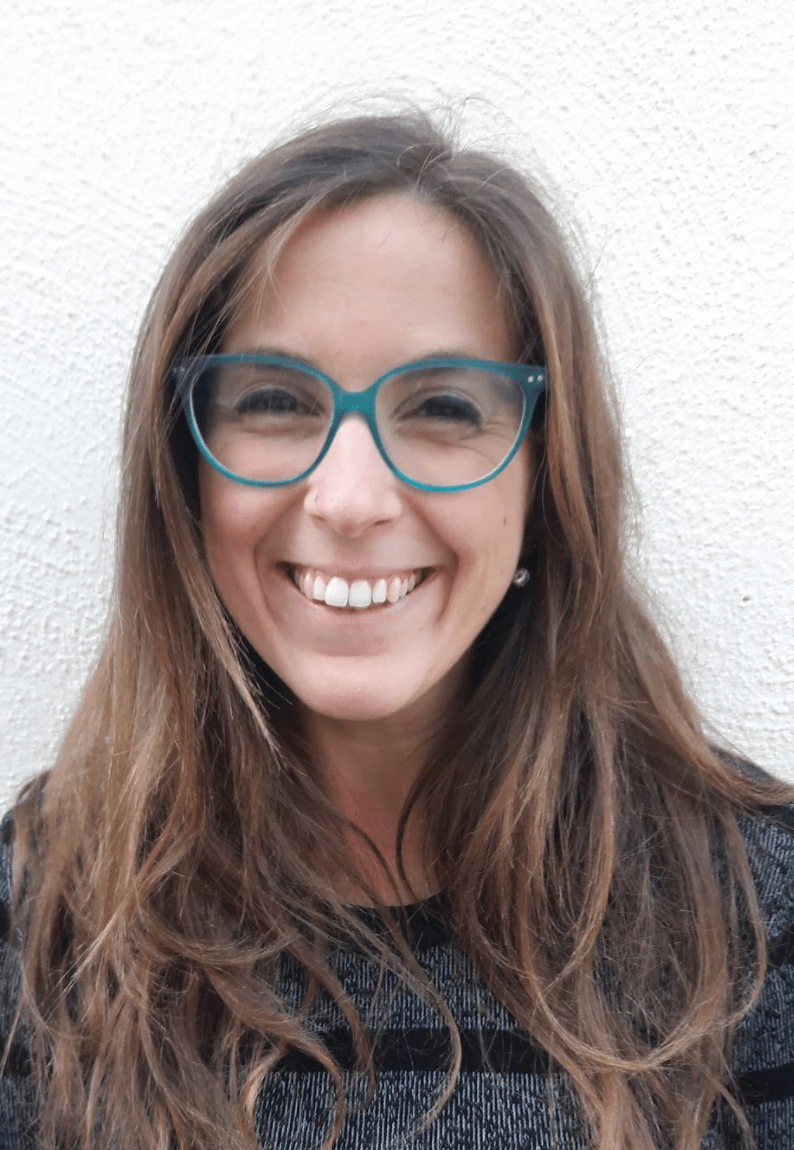
Marine litter is a problem found across the world. As well as being directly deposited in seas and oceans, plastic, wood, rope, and other items are accumulating on land and making their way into bodies of water. On the Maltese Islands, such littering happens frequently. Last summer the Physical Oceanography Research Group (Faculty of Science, University of Malta [UM]) took a step towards tackling the issue.
Under the supervision of Prof. Alan Deidun and Adam Gauci, I sought to harness innovative techniques and create a monitoring programme that would begin to identify what kind of litter is on Malta and Gozo’s beaches.
The national Marine Strategy Framework Directive was followed to ensure good data collection and meeting of the ‘Good Environmental Status’ by 2020. The study used images captured by a drone in three coastline areas: the north east Marine Protected Area of Malta, Qawra Point, and the eastern and western points of Baħar Iċ-Ċagħaq. Flying at an altitude of 30 meters, the drone was programmed to spot specific categories of marine and coastal litter. These included plastic, wood, rope, rubber, and other miscellaneous items such as washing machines and mattresses.
Apart from characterising marine litter, the project aimed to observe whether hydrodynamical phenomena, such as wind and currents, are also influencing the accumulation of litter. However, results showed that the difference between the areas of study was not due to dynamics of coastal currents and coastal topography, but to human activities. In Baħar iċ-Ċagħaq, for example, categories such as wood and plastic were found on land at considerable distances from the shoreline, close to points easily accessible by cars.
We also used statistical analyses to confirm that parameters such as tourism, lack of public knowledge, and lack of environmental consciousness are affecting the accumulation of marine litter, laying the blame firmly on human activities.
The remedy to the situation is in Maltese citizens’ hands. Only we have the power to turn things around. It’s time to clean up our act.
This research was carried out as part of a Masters in Physical Oceanography, Faculty of Science, UM.
Author: Serena Lagorio
An eye on the sea
Continuous measurement and analysis of marine conditions in real time is allowing local users to better understand the short and long-term implications of the changing sea. Prof. Aldo Drago writes.
University Maritime Platform: Connecting Professionals
The University Maritime Platform, a dedicated space for all those interested in the sea and the work happening around it. Prof. Claire De Marco writes.
Paving the way for underwater explorations
Nearly two-thirds of the Earth is covered in water. Yet we know more about the surface of the moon and Mars than we do of our own ocean floor. Humans have an understandable fear of water and desire to remain safe on land. The oceans are formidable places requiring sophisticated equipment. Even more dangerous is exploring uncharted areas.

